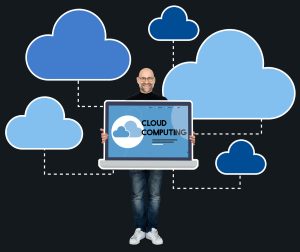Efficient database management is critical to modern business operations. Whether you’re managing small-scale applications or enterprise-grade systems, choosing the right database software is essential for ensuring performance, scalability, and security.
In this guide, we explore the best software for database management in 2025—covering open-source, commercial, cloud-based, and on-premise solutions suited for developers, database administrators, and IT teams alike.
Why Database Management Software Matters
Databases are the foundation of almost every software system. The right tools help organize, store, retrieve, and manage large volumes of data securely and efficiently. Effective database management software offers benefits such as:
-
Fast and secure access to data
-
Support for relational and NoSQL models
-
User access control and role management
-
Data visualization and analytics integration
-
Backup, recovery, and performance monitoring
Best Software for Database Management
1. MySQL
MySQL is one of the world’s most popular open-source relational database management systems (RDBMS). It’s widely used in web applications and is backed by Oracle Corporation.
Key Features:
-
Supports SQL-based queries
-
ACID-compliant for transactional integrity
-
Scalable and reliable for large datasets
-
Extensive community support
-
Cross-platform compatibility
2. PostgreSQL
PostgreSQL is a powerful open-source object-relational database known for its standards compliance and extensibility. It’s ideal for complex applications and analytics workloads.
Key Features:
-
Advanced support for data types and indexing
-
Extensible with custom functions and plugins
-
MVCC for concurrent transaction processing
-
Built-in JSON and XML support
-
Strong security and role-based access control
3. Microsoft SQL Server
Microsoft SQL Server is a commercial relational database designed for high availability and integration with Windows applications. It’s widely used in enterprise environments.
Key Features:
-
Advanced reporting and analytics capabilities
-
Integration with Microsoft tools (Power BI, Azure)
-
Full-text search and in-memory performance boost
-
Visual Studio and SSMS integration
-
Built-in data encryption and auditing
4. Oracle Database
Oracle Database is an enterprise-grade solution known for performance, reliability, and scalability. It supports both OLTP and OLAP workloads.
Key Features:
-
Multi-model database (relational, JSON, spatial, XML)
-
In-memory and parallel query support
-
High availability with Oracle RAC and Data Guard
-
Autonomous database options on Oracle Cloud
-
Advanced backup and disaster recovery
5. MongoDB
MongoDB is a leading NoSQL document database designed for scalability and flexibility. It stores data in JSON-like BSON format, making it suitable for dynamic, unstructured data.
Key Features:
-
Schema-less data modeling
-
Horizontal scaling via sharding
-
Powerful query language with aggregation framework
-
Built-in replication and failover
-
Atlas cloud-hosted option available
6. MariaDB
MariaDB is a community-developed fork of MySQL that offers improved performance and advanced features. It’s fully compatible with MySQL and is often used as its drop-in replacement.
Key Features:
-
Enhanced storage engines and indexing
-
Supports Galera Cluster for synchronous replication
-
Improved security features
-
MySQL-compatible client tools
-
Open-source with commercial support available
7. Redis
Redis is an open-source, in-memory key-value store known for its speed. It’s often used for caching, real-time analytics, and messaging queues.
Key Features:
-
In-memory data storage for ultra-fast access
-
Supports data structures like hashes, lists, sets
-
Persistence options via snapshots or AOF logs
-
Pub/sub messaging capabilities
-
High availability with Redis Sentinel and Cluster
8. Firebase Realtime Database
Firebase Realtime Database is a cloud-hosted NoSQL database from Google, designed for mobile and real-time applications.
Key Features:
-
Real-time data synchronization across devices
-
Serverless architecture with built-in SDKs
-
Integrated with Firebase Authentication
-
Offline persistence for mobile apps
-
Scales automatically with usage
9. Amazon Aurora
Amazon Aurora is a cloud-based relational database compatible with MySQL and PostgreSQL. It’s designed for high throughput and availability on AWS.
Key Features:
-
Fully managed by AWS
-
Auto-scaling storage up to 128 TB
-
5x faster than standard MySQL
-
Automated backups and failover
-
Replication across multiple availability zones
10. Couchbase
Couchbase is a distributed NoSQL database that combines the flexibility of JSON with the performance of in-memory architecture. It’s used for enterprise-scale applications.
Key Features:
-
Multi-model database (key-value, document, SQL++)
-
Built-in cache layer for speed
-
Distributed architecture with horizontal scaling
-
Full-text search, eventing, and analytics support
-
Sync with mobile apps via Couchbase Lite
Comparison Table
| Software | Type | Best For | Open Source | Cloud Option | Query Language |
|---|---|---|---|---|---|
| MySQL | Relational | Web apps, CMS platforms | Yes | Yes | SQL |
| PostgreSQL | Relational | Advanced data & analytics apps | Yes | Yes | SQL, PL/pgSQL |
| Microsoft SQL Server | Relational | Enterprise Windows applications | No | Yes (Azure) | T-SQL |
| Oracle Database | Relational | Mission-critical enterprise systems | No | Yes | PL/SQL |
| MongoDB | NoSQL | Scalable, unstructured data | Yes | Yes (Atlas) | Mongo Query Language |
| MariaDB | Relational | MySQL-compatible with improvements | Yes | Yes | SQL |
| Redis | Key-value | Caching and real-time applications | Yes | Yes | RESP Commands |
| Firebase Realtime DB | NoSQL | Real-time mobile/web applications | No | Yes | REST, SDKs |
| Amazon Aurora | Relational | Scalable cloud-based workloads | No | Yes (AWS) | SQL |
| Couchbase | NoSQL | High-volume data + mobile sync | Partial | Yes | SQL++, N1QL |
How to Choose the Best Database Management Software
Choosing the right database depends on your technical requirements, team skills, and application type.
Ask yourself:
-
Are you dealing with structured (SQL) or unstructured (NoSQL) data?
-
Do you need horizontal scaling for large user loads?
-
Are you self-hosting or deploying in the cloud?
-
What is your preferred programming language or tech stack?
-
How important is real-time synchronization or in-memory speed?
Use Cases:
-
Small business websites: MySQL, MariaDB
-
Mobile app backends: Firebase, MongoDB
-
Enterprise-grade systems: Oracle, Microsoft SQL Server
-
High-speed caching: Redis
-
Cloud-native architectures: Aurora, Couchbase
Conclusion
In 2025, database management is more dynamic than ever. Whether you’re developing mobile apps, managing complex enterprise systems, or scaling a SaaS platform, having the right database software is essential to ensuring performance, flexibility, and security.
This list of the best software for database management provides a solid foundation for any team looking to organize, store, and scale their data effectively. From open-source tools like PostgreSQL and Redis to cloud-native platforms like Aurora and Firebase, the options are broad and powerful.







